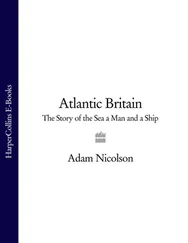The Voiturette was powerful for its size and weight, and its low build made it stable, but the short wheelbase made spinning on slippery cobbled roads quite common, and comfort was not a priority because they had no suspension, relying on pneumatic tyres and a C-sprung seat to provide a modicum of relief. However, driven by what we must assume were men made of granite, they dominated their class in early motor races, famously occupying the top four places in the 1896 Paris-Mantes-Paris race, and winning their class in the 1897 Paris-Dieppe race with a time that was 0.6mph faster than the best four-wheeled car. Legendary English racing driver and Le Mans winner S.C.H. Sammy Davis bought an example in 1929 to use in the London to Brighton Veteran Car Run (a Léon Bollée Voiturette was apparently the first car across the line on the original Emancipation Run in 1896) and was pleased to achieve a maximum speed of 19mph when testing it at Brooklands! This would have been impressive in 1896; the first Land Speed Record was recorded in 1898 at 39mph. Amazing to think now how far we have come.
After being developed in the family’s Le Mans workshop, the car was produced in Paris, at 163 Avenue Victor Hugo, and at Le Harve by Diligent et Cie. It’s believed that around 750 units were made; Michelin ordered 200 and the Hon Charles Rolls (we all know who he was) was a customer in 1897. By 1899 new four-wheeled Bollées were being produced, some with much larger 4.6-litre engines, but the marque was bought by UK maker Morris in 1924, who produced the Morris-Léon Bollée until 1931. It finally faded away for good in 1933.
Léon Bollée’s tricycle may have been short-lived, but the word he appears to have invented to name it, Voiturette, lived on and became the generally accepted term for a small lightweight car. It comes from the French word for automobile, voiture , and became so ubiquitous that it was used to name a specific Voiturette racing class for lightweight cars with engines of 1.5 litres or smaller. The supercharged Alfa Romeo 158/159 Alfetta that so dominated F1 on its inception was, in fact, originally designed as a Voiturette class racer.
Конец ознакомительного фрагмента.
Текст предоставлен ООО «ЛитРес».
Прочитайте эту книгу целиком, купив полную легальную версию на ЛитРес.
Безопасно оплатить книгу можно банковской картой Visa, MasterCard, Maestro, со счета мобильного телефона, с платежного терминала, в салоне МТС или Связной, через PayPal, WebMoney, Яндекс.Деньги, QIWI Кошелек, бонусными картами или другим удобным Вам способом.












